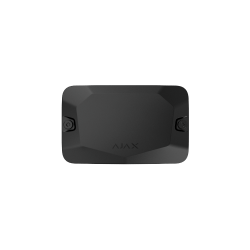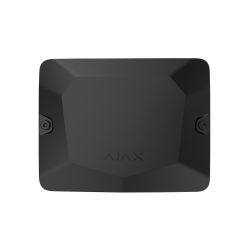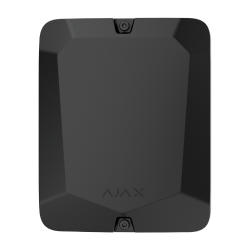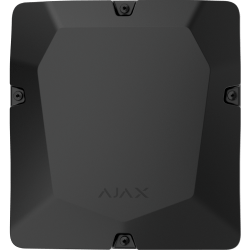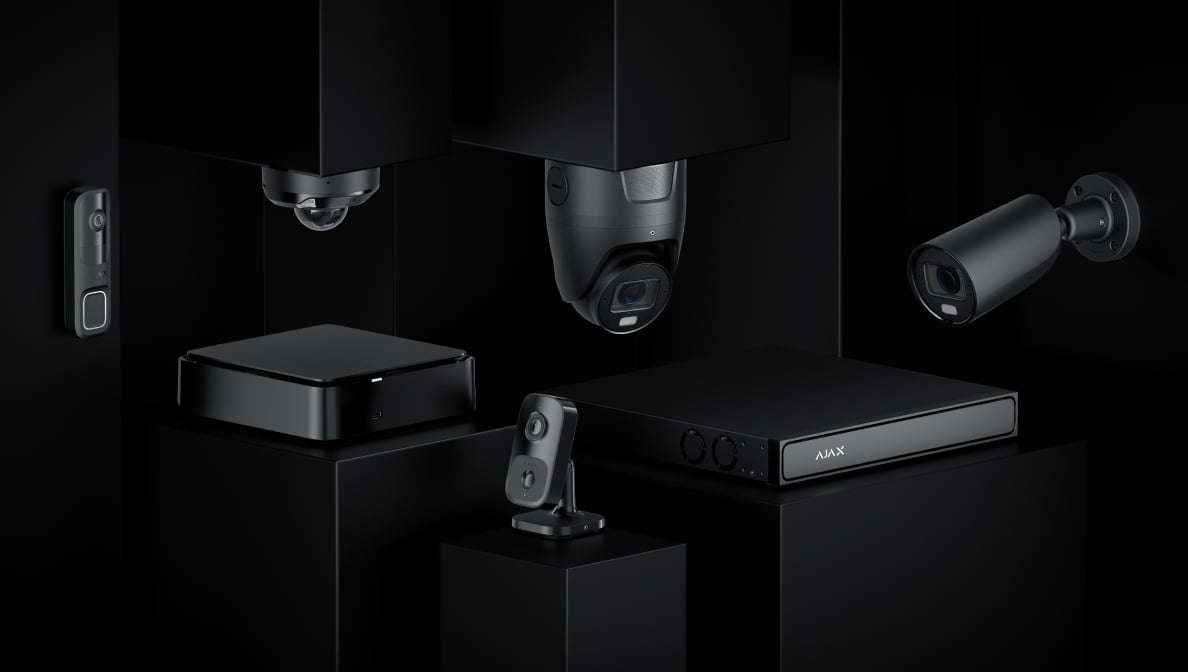
Ajax Case devices
Casings for secure wired connection of Ajax devices

Explore Ajax firsthand
Ajax offers more than just protection. Experience the full potential of Ajax solutions — with advanced features, exceptional reliability, and an unmatched user experience.
Convenient installation of Fibra products
Choose from four Case versions that accommodate a single Ajax module or up to eight modules and two 18 Ah batteries. Devices within the casings can be fixed in two positions1. Each Case is equipped with cable channels for organized cable routing and holding screws to secure the casing lid. All product versions meet Grade 3 requirements.
Explore the unique features of Ajax casings
Versatile configurations
Case is available in four versions, each with different slot capacities. Case A (106) is designed for a single Ajax module. Case B (175) can accommodate up to two devices. Case C (260) is intended for one Ajax module and a 7 Ah battery. Finally, Case D (430) can house up to eight devices and two 18 Ah batteries, offering thousands of possible combinations. In Case D (430), devices can be attached in any order using special Module Holder (type A) and Module Holder (type B) units2. Use the Case configurator to find the optimal model.

Efficient cable routing
Ajax casings are designed to make cable management convenient. All Case models feature perforated sections for running cables through the back. They also have recesses for easy drill placement and routing cables along the sides, bottom, or top. During drilling, the tool rests on plastic stoppers, ensuring the installed devices remain protected. Case C (260) and Case D (430) have battery holders at the casing’s bottom to prevent accidental dislodgement. Also, the largest casing is supplied with a holding stripe for the battery.

Tamper-proof mounting
Security is paramount in each Case version. Fix the cables with ties using fasteners. The device’s durable latches enable attachment without the need for any additional tools. The casings are equipped with holding screws to secure the casing lid. A tamper board, included in the complete set, is connected to the Ajax device with a wire. This board detects any attempts to open the lid or detach the casing from the surface.

Not applicable to Case C (260).
The largest Case comes with four Module Holder (type A) units. Additional holders or Module Holder (type B) units can be purchased separately if needed.
Ajax product categories
In an Ajax system, you can combine devices of all product categories: Intrusion protection, Video surveillance, Fire and life safety, or Comfort and automation. Create the system to suit your needs and manage it in a single interface.
Overview of secure cases for wired device installation
Protective cases, also known as mounting boxes, play an essential role in organizing, concealing, and safeguarding wired devices at a facility. They are ideal for housing wired boards and other essential components, offering physical protection and streamlined installation. These cases allow technicians to hide and secure modules effectively, keeping everything organized and tamper-resistant.
Designed to fit various configurations, Ajax`s casings are available in four distinct versions, each supporting a range of module setups and battery capacities. These options make it easy to find the perfect match for your security setup needs, whether for a single module or a complex multi-device installation.
Diverse casing options for versatile installations
Each version of the case is purpose-built with a different device capacity, making it suitable for different scales of installations:
- Case A (106): Holds one wired module, designed for minimal setups.
- Case B (175): Supports up to two modules, accommodating small-to-medium configurations.
- Case C (260): Includes space for one module and a 7 Ah battery, making it ideal for setups requiring backup power.
- Case D (430): Accommodates up to eight modules and two 18 Ah batteries, enabling extensive, high-capacity installations with customizable device arrangements.
In each casing model, devices are securely positioned, and in Case D, a particular holder setup lets users customize device placement for complex configurations. This modularity supports flexibility and scalability as the system needs to evolve.
Convenient and efficient cable management
Each case model has thoughtful design features for efficient cable organization. Perforated sections and pre-marked drill spots allow technicians to run cables neatly through the sides, top, or bottom without risking damage to the modules. The internal design also includes channels and slots for routing cables, ensuring that all wiring stays securely in place.
For models like Case C (260) and Case D (430), battery holders are positioned at the bottom of the case to prevent any dislodgement, adding a layer of security to the system’s power supply. Case D also includes a holding stripe to keep batteries secure within the casing.
Tamper-resistant and durable design
Security is a top priority in these cases, with each model featuring tamper-proof elements. The lid is held securely with screws, and fasteners inside the casing enable installers to secure cables with ties, reducing the risk of tampering. A tamper board can also be connected to the module, detecting any unauthorized attempts to open the casing or detach it from its mounting surface. The tamper board is compatible with all case versions and provides immediate alerts in case of tampering, safeguarding the overall security system.
Summary of unique features and configurations
These secure casings offer essential features for installations of all sizes:
- Modular Device Capacity: Ranging from one module to eight modules with battery options, providing flexibility for small to large setups.
- Efficient Cable Management: Channels and pre-drilled areas for organized cable routing, preventing interference, and keeping cables secure.
- Tamper Resistance: Durable construction with tamper detection to prevent unauthorized access.
This flexibility and robust security make these cases suitable for wiring setups that require organization, protection, and modularity in accordance with professional security standards.
